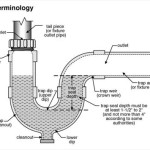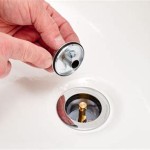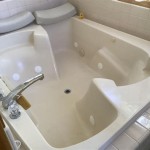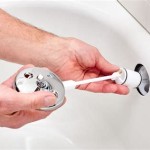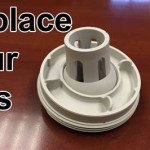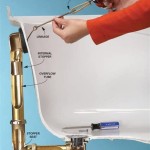How Much Does Bathtub Refinishing Cost?
Bathtub refinishing, also known as bathtub resurfacing or bathtub reglazing, is a cost-effective alternative to replacing a worn, damaged, or outdated bathtub. Instead of undergoing a potentially disruptive and expensive complete replacement, refinishing restores the existing bathtub to a like-new condition, extending its lifespan and improving the overall aesthetics of the bathroom. Understanding the factors that influence the cost of bathtub refinishing is crucial for homeowners seeking to budget for this project and make informed decisions.
The cost of bathtub refinishing can vary significantly based on several key elements, including the type of material of the bathtub, the extent of the damage, the complexity of the finish desired, and the geographic location of the service. Labor costs, material costs, and the reputation of the refinishing company also contribute to the overall expense. Generally, bathtub refinishing is considerably less expensive than bathtub replacement, making it an attractive option for many homeowners.
This article will delve into the various factors that influence the cost of bathtub refinishing, providing a detailed breakdown of the expenses involved and offering insights into how to obtain accurate estimates for this valuable home improvement service. By understanding these components, homeowners can effectively evaluate their options and determine if bathtub refinishing is the right solution for their needs and budget.
Factors Influencing Bathtub Refinishing Costs
Several key factors play a crucial role in determining the overall cost of bathtub refinishing. These factors include the type of bathtub material, the extent and type of damage present, the chosen refinishing materials and techniques, and labor costs. Each of these elements contributes independently and interdependently to the final price of the refinishing project.
Bathtub Material: The material of the bathtub significantly influences the refinishing cost. Common bathtub materials include porcelain, cast iron, acrylic, and fiberglass. Porcelain and cast iron bathtubs, known for their durability and heat retention, typically require more intensive preparation and specialized refinishing techniques, potentially increasing the cost. Acrylic and fiberglass bathtubs, being more susceptible to scratches and damage, often require different types of repair and refinishing materials, which can also affect the price. The complexity of working with each material, coupled with the cost of specific refinishing products designed for each type, contributes to the overall expense.
Extent and Type of Damage: The condition of the bathtub directly affects the amount of preparation work required before refinishing can begin. Minor chips, scratches, and stains are relatively easy to repair and will have a minimal impact on the overall cost. However, more extensive damage, such as cracks, rust, or significant surface deterioration, necessitates more time-consuming and labor-intensive repairs. Deep cracks may require specialized fillers and bonding agents to ensure a smooth and durable refinished surface. Rust removal, particularly on cast iron bathtubs, can be a complex process involving chemical treatments and abrasive techniques. The more extensive the damage, the more materials, time, and expertise are required, leading to higher refinishing costs.
Refinishing Materials and Techniques: The choice of refinishing materials and techniques also plays a significant role in the cost. Different types of coatings, such as epoxy, acrylic urethane, and porcelain polymers, offer varying levels of durability, gloss, and resistance to chemicals and abrasion. Higher-quality coatings, while more expensive, tend to provide a longer-lasting and more aesthetically pleasing finish. The application method, such as spraying or rolling, can also impact the cost, as spraying typically requires specialized equipment and more skilled technicians. Furthermore, the desired finish, whether it’s a standard color match or a custom color or texture, can influence the price due to the cost of custom mixing and application techniques.
Labor Costs: Labor costs constitute a significant portion of the overall expense of bathtub refinishing. Refinishing is a labor-intensive process that requires skilled technicians to properly prepare the surface, apply the refinishing materials, and ensure a smooth and durable finish. Labor costs can vary depending on the geographic location, the experience and reputation of the refinishing company, and the complexity of the project. Companies with experienced and highly trained technicians may charge higher rates, but their expertise can ensure a higher-quality and longer-lasting refinished surface. It is important to obtain multiple quotes from different refinishing companies to compare labor costs and ensure that the pricing is competitive and transparent.
Typical Cost Breakdown of Bathtub Refinishing
To better understand the overall cost of bathtub refinishing, it's helpful to break down the expenses into various categories. While the exact percentages may vary depending on the specific project and location, this breakdown provides a general overview of where your money goes.
Materials (20-30%): This category includes the cost of all the materials used in the refinishing process, such as the refinishing coating itself (epoxy, acrylic urethane, or porcelain polymer), primers, bonding agents, fillers, cleaning solutions, masking tape, sandpaper, and any other necessary supplies. The type and quality of these materials directly impact the durability and appearance of the finished product. Choosing higher-quality materials may increase the initial cost but can result in a longer-lasting and more aesthetically pleasing result.
Labor (50-60%): Labor costs represent the largest portion of the overall expense. This includes the time and expertise of the technicians who prepare the surface, repair any damage, apply the refinishing coating, and ensure a smooth and even finish. Labor costs can vary depending on the geographic location, the complexity of the project, and the experience and reputation of the refinishing company. Companies with experienced and highly skilled technicians may charge higher rates due to their expertise and ability to deliver a high-quality refinished surface.
Overhead and Profit (20-30%): This category covers the refinishing company's overhead expenses, such as insurance, licensing, transportation, marketing, and administrative costs. It also includes the company's profit margin. The overhead and profit margin can vary depending on the size and efficiency of the company, as well as the competitive landscape in the area. While homeowners may be tempted to choose the lowest bid, it's important to consider the company's reputation and ensure that they are adequately insured and licensed to protect yourself from potential liability.
Additional Costs: In some cases, there may be additional costs associated with bathtub refinishing, such as the cost of repairing or replacing damaged plumbing fixtures, removing old caulk or sealant, or dealing with unexpected issues like hidden mold or structural damage. It's important to discuss these potential additional costs with the refinishing company beforehand to avoid any surprises.
By understanding this cost breakdown, homeowners can gain a better understanding of where their money is going and make informed decisions about their bathtub refinishing project. Obtaining multiple quotes from different companies and carefully reviewing the details of each estimate can help ensure that you are getting a fair price and that all necessary costs are included.
How to Obtain Accurate Bathtub Refinishing Estimates
Obtaining accurate and reliable estimates is crucial for effectively budgeting for your bathtub refinishing project and ensuring that you receive the best possible value for your investment. Following a structured approach and gathering comprehensive information can help you obtain precise estimates and make informed decisions.
Research and Select Reputable Refinishing Companies: Start by researching refinishing companies in your area and selecting a few that have a solid reputation, positive customer reviews, and proper licensing and insurance. Check online review platforms, such as Yelp, Google Reviews, and Angie's List, to gauge customer satisfaction and identify any potential red flags. Verify that the companies are properly licensed and insured to protect yourself from liability in case of accidents or damages during the refinishing process.
Provide Detailed Information and Photos: When contacting refinishing companies for estimates, provide them with as much detailed information as possible about your bathtub. This includes the type of material (porcelain, cast iron, acrylic, or fiberglass), the extent and type of damage (chips, scratches, cracks, rust, or stains), and any specific requirements or preferences you may have. Providing clear and well-lit photos of your bathtub can also help the refinishing companies provide a more accurate estimate.
Schedule On-Site Inspections: Whenever possible, schedule on-site inspections with the refinishing companies you are considering. This allows them to visually assess the condition of your bathtub and identify any potential challenges or hidden issues that may affect the refinishing process. On-site inspections also provide an opportunity to discuss your specific needs and expectations with the technicians and ask any questions you may have.
Obtain Written Estimates with Detailed Breakdowns: Request written estimates from each refinishing company you are considering. The estimates should include a detailed breakdown of the costs, including materials, labor, overhead, and any potential additional expenses. Make sure the estimates clearly specify the type of refinishing coating being used, the surface preparation methods employed, and the warranty offered. Ask the companies to clarify any ambiguous or unclear items in the estimates.
Compare Estimates and Consider the Overall Value: Carefully compare the estimates you receive from different refinishing companies. Don't just focus on the bottom line; consider the overall value being offered, including the quality of materials, the experience of the technicians, the warranty provided, and the reputation of the company. While it may be tempting to choose the lowest bid, remember that a higher-quality refinishing job can result in a longer-lasting and more aesthetically pleasing result, ultimately saving you money in the long run.
By following these steps, homeowners can obtain accurate and reliable bathtub refinishing estimates and make informed decisions about their home improvement project. Taking the time to research, gather information, and compare estimates can help ensure that you receive the best possible value for your investment and achieve a beautiful and durable refinished bathtub.

Bathtub Refinishing Costs Maryland Tub Tile

How Much Does Bathtub Refinishing Cost Family Handyman

How Much Does Tub Reglazing Cost In Portland Or

Bathtub Refinishing Cost 2024 Guide Angi

How Much Does Bathtub Refinishing Cost Forbes Home

Tub Resurfacing Ballpark Estimator Custom And Tile

2024 Bathtub Refinishing Costs Tub Reglazing Resurfacing

How Much Does It Cost To Refinish Or Reglaze A Bathtub Homeserve Usa

Bathtub Refinishing Todds Porcelain Fiberglass Repair

How Much Does Tile Refinishing Cost Maryland Tub
Related Posts


